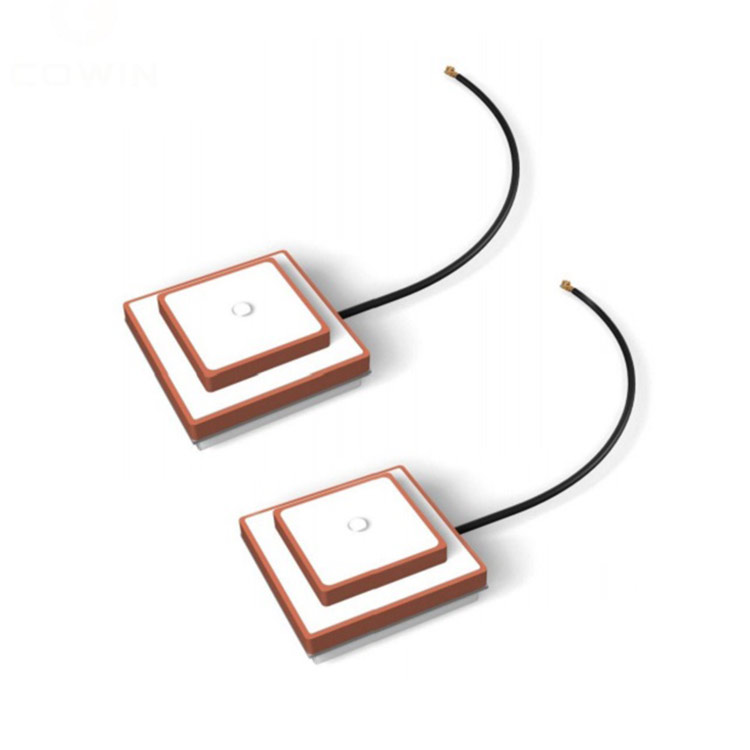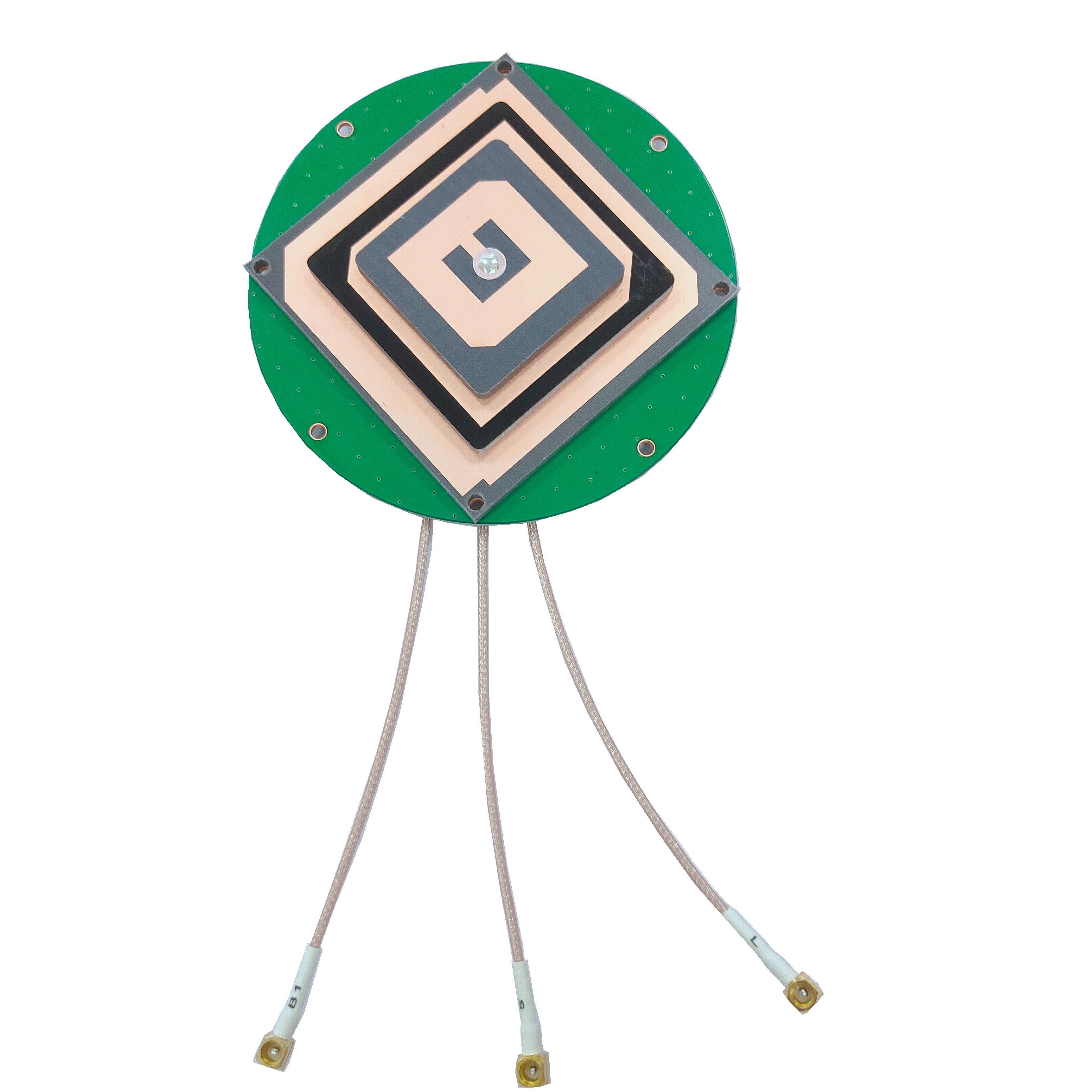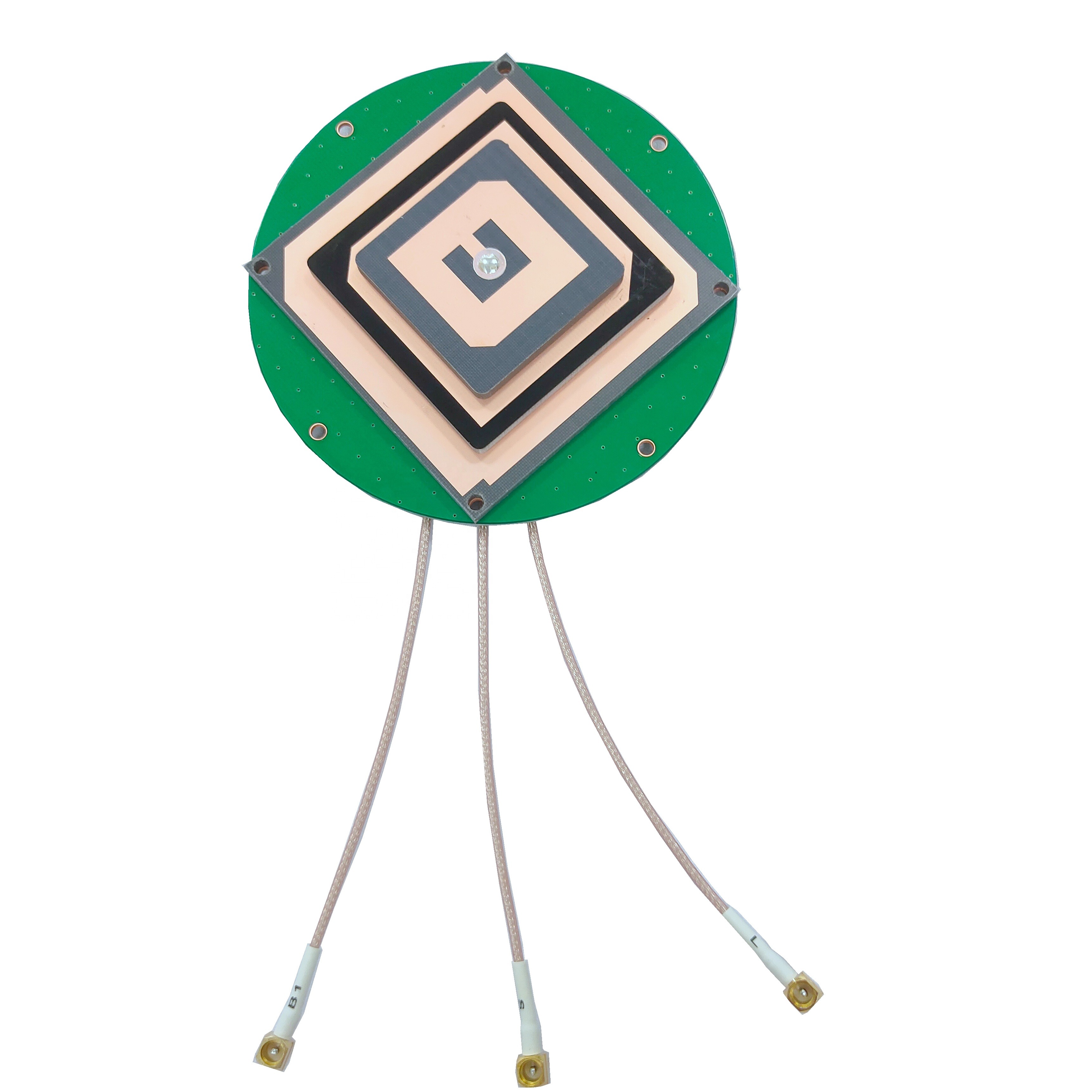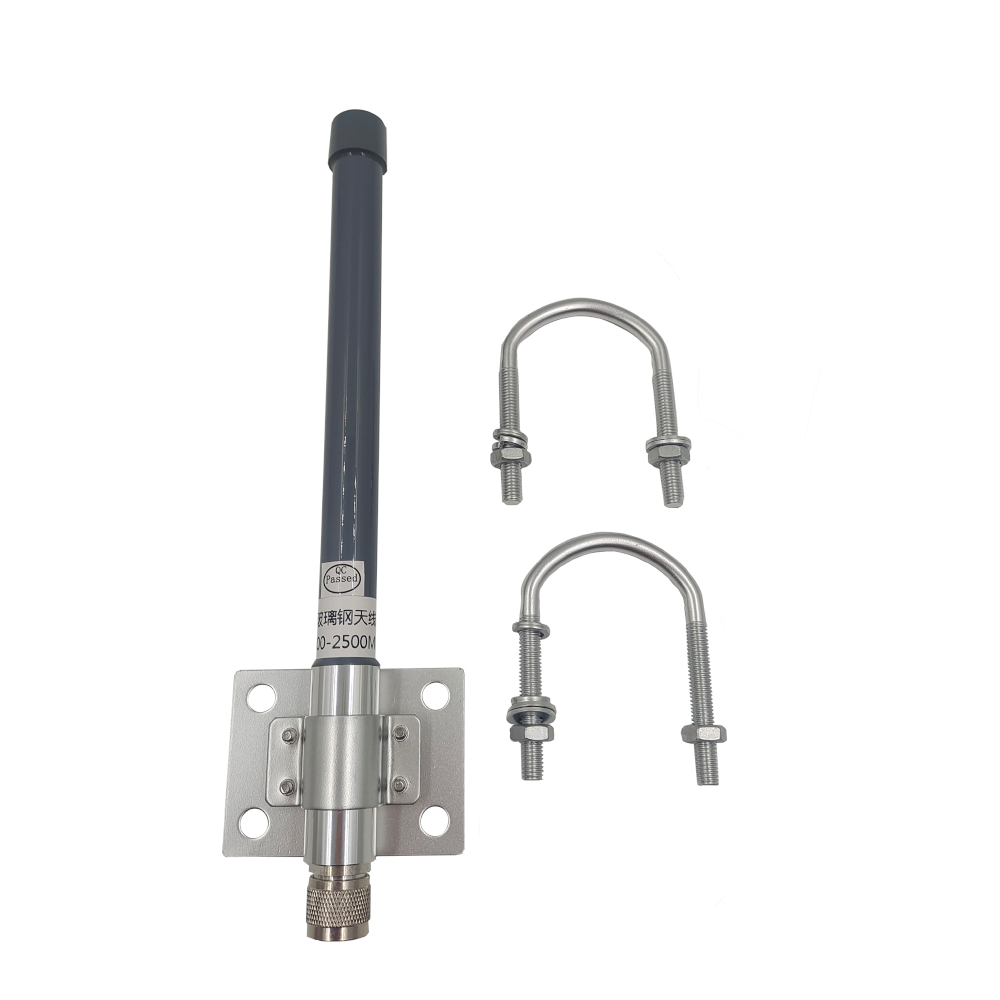overview
1.1 Introduction to GNSS and IoT Tracking
The Global Navigation Satellite System (GNSS) is a constellation of satellites providing global positioning, navigation, and timing (PNT) services. Key systems include GPS (U.S.), Galileo (EU), GLONASS (Russia), BeiDou (China), and regional augmentations like QZSS (Japan) and IRNSS (India). These systems enable precise location tracking, critical for Internet of Things (IoT) applications such as asset management, fleet monitoring, and personal safety.
IoT tracking devices integrate GNSS receivers with wireless communication modules (e.g., LTE, LoRa, NB-IoT) to transmit location data to cloud platforms. Embedded GNSS antennas are pivotal in these systems, converting satellite signals into electrical signals for processing. Unlike external antennas, embedded designs offer compactness, cost efficiency, and seamless integration, making them ideal for mass-deployed IoT solutions.
1.2 Market Dynamics and Growth Drivers
The embedded GNSS antenna market is expanding rapidly, driven by:
IoT Proliferation: The global IoT market is projected to reach $1.5 trillion by 2030, with tracking devices accounting for a significant share.
Regulatory Mandates: SOLAS (Safety of Life at Sea) requires real-time tracking for maritime containers, while aviation and logistics sectors adopt GNSS for cargo visibility.
Technological Advancements: Multi-band GNSS receivers (e.g., u-blox M10) and low-power wide-area networks (LPWANs) enhance tracking accuracy and battery life.
Consumer Demand: Wearables (e.g., smartwatches) and pet trackers rely on embedded antennas for unobtrusive location services.
Key players include Antenova, Taoglas, Pulse Larsen, u-blox, and Qorvo, offering antennas with footprints as small as 10 mm × 10 mm while supporting GPS, Galileo, and GLONASS.
1.3 Challenges in Embedded GNSS Antenna Design
Despite their advantages, embedded antennas face challenges:
Size Constraints: IoT devices demand ultra-compact antennas, often compromising gain and bandwidth.
Multipath Interference: Urban environments cause signal reflections, degrading accuracy.
Thermal and Mechanical Stress: Harsh conditions (e.g., automotive under-hood deployments) require rugged designs.
Regulatory Compliance: Antennas must meet SAR (Specific Absorption Rate) limits for human exposure in wearables.
1.4 Key Performance Metrics
Embedded GNSS antennas are evaluated based on:
Gain: Typically 2–4 dBi, with higher gain improving weak-signal reception.
Bandwidth: 15–20 MHz to cover GNSS frequency variations (e.g., GPS L1 at 1575.42 MHz).
Efficiency: 70–85%, reflecting power loss during signal conversion.
Polarization: Right-hand circular polarization (RHCP) to match satellite signals and minimize multipath.
Axial Ratio: <3 dB ensures consistent performance across elevation angles.
Design and Construction
2.1 Antenna Types and Topologies
2.1.1 Microstrip Patch Antennas
The most common embedded GNSS antennas use microstrip patch designs due to their low profile (<3 mm) and compatibility with PCBs. Key features:
Geometry: Rectangular or circular patches resonate at GNSS frequencies (e.g., 1575.42 MHz for GPS L1).
Substrate: High-frequency laminates like Rogers 4350B (εr = 3.48) minimize dielectric loss.
Ground Plane: A minimum 50 mm × 50 mm ground plane is recommended, though some antennas (e.g., Antenova Depica) operate with 30 mm × 30 mm planes.
2.1.2 Fractal Antennas
Fractal geometries (e.g., Koch curves, Sierpinski gaskets) enable multi-band operation and size reduction. For example, the Taoglas VX.1000 uses a fractal patch to support GPS L1 and Galileo E1 in a 15 mm × 15 mm footprint.
2.1.3 Planar Inverted-F Antennas (PIFAs)
PIFAs combine a patch with a shorting pin to reduce size and improve impedance matching. They are popular in wearables due to their 5–8 mm height and compatibility with curved surfaces.
2.2 Frequency Bands and Multi-System Support
Modern embedded antennas support multiple GNSS bands:
L1/E1 (1575.42 MHz): Standard for GPS, Galileo, and QZSS.
L2 (1227.60 MHz): Used for dual-frequency GNSS to correct ionospheric delays.
L5 (1176.45 MHz): Emerging for safety-critical applications (e.g., autonomous vehicles).
Advanced antennas, like the u-blox ANN-MB series, integrate band-pass filters to reject out-of-band interference from cellular (e.g., LTE Band 13 at 746–756 MHz) or Wi-Fi signals.
2.3 Materials and Manufacturing Processes
2.3.1 Substrate Materials
Rogers 4350B: Low loss (tan δ = 0.0037) and stable dielectric constant (εr = 3.48) across temperatures.
PTFE (Teflon): Used in high-temperature applications (e.g., automotive under-hood trackers).
LCP (Liquid Crystal Polymer): Flexible and moisture-resistant, ideal for wearables.
2.3.2 Conductive Layers
Copper (Cu): Standard for cost-sensitive applications (e.g., logistics trackers).
Silver (Ag): Used in high-frequency designs to reduce skin effect losses.
Laser Direct Structuring (LDS): Enables 3D antenna shapes on plastic housings, improving space utilization.
2.3.3 Encapsulation and Protection
Antennas are encapsulated in:
Epoxy Resin: Provides IP67 protection against dust and water.
LCP Overmolding: Used in flexible antennas for wearables.
Metal Shielding: Optional for EMI protection in high-interference environments.
2.4 Integration with IoT Devices
2.4.1 PCB Layout Guidelines
Keepout Zone: Maintain ≥10 mm clearance from batteries, LCDs, and metal shields to avoid detuning.
Feedline Design: Use microstrip or coplanar waveguide (CPW) feedlines with <1 dB insertion loss.
Impedance Matching: Adjust patch dimensions or add shunt inductors/capacitors to achieve 50 Ω impedance.
2.4.2 Customization Options
Manufacturers offer:
Frequency Tuning: Adding parasitic elements or slots to shift resonant frequencies.
Mechanical Form Factors: Flexible PCB antennas for curved surfaces (e.g., smart bands).
Connector Types: U.FL for modular designs or solder pads for direct integration.
Working Principles
3.1 Signal Reception and Polarization Matching
GNSS satellites transmit RHCP signals to minimize multipath interference. Embedded antennas must replicate this polarization to maximize signal capture. Patch antennas inherently produce RHCP when excited in their fundamental mode (TM₁₀), making them ideal for GNSS applications.
3.2 Resonance and Frequency Selection
For GPS L1 (1575.42 MHz) on Rogers 4350B (εr = 3.48), a patch length of 28 mm is typical. Bandwidth is controlled by the patch’s aspect ratio and ground plane clearance, with typical values of 15–20 MHz.
3.3 Gain and Radiation Pattern Optimization
Embedded antennas exhibit 2–4 dBi gain with an omnidirectional pattern in the horizontal plane. However, the ground plane and device enclosure can distort the pattern, creating nulls. Techniques to mitigate this include:
Parasitic Elements: Added to the patch edge to suppress surface waves (e.g., in the Taoglas VX.1000).
Choke Rings: Surround the patch to reject low-angle multipath signals.
Advanced Receivers: Pairing with multi-constellation GNSS chips (e.g., u-blox M10) that use algorithms like RTK (Real-Time Kinematic) to filter out errors.
3.4 Multi-Path Mitigation Strategies
Urban environments cause signal reflections, leading to errors in position calculations. Embedded antennas address this through:
High-Pass Filtering: Rejecting low-frequency multipath signals (e.g., from large buildings).
Adaptive Beamforming: Using phased-array techniques to nullify interfering signals (emerging in high-end trackers).
Time-Differenced Carrier Phase (TDCP): Improving accuracy by comparing carrier phase measurements over time.
3.5 Power Efficiency Considerations
IoT devices often rely on batteries, so antennas must minimize power consumption. This is achieved by:
Low-Loss Substrates: Rogers 4350B reduces dielectric loss compared to FR4.
Optimized Feedlines: <1 dB insertion loss minimizes signal attenuation.
Duty Cycling: The antenna is activated only during GNSS fixes to conserve energy.
Advantages and Challenges
-
4.1 Advantages
4.1.1 Compact Size and Aesthetics
Embedded antennas eliminate the need for external mounts, enabling sleek designs for wearables and consumer electronics. For example, the Antenova Depica measures just 12 mm × 12 mm × 2 mm, fitting into smartwatches and fitness bands.
4.1.2 Cost-Effectiveness
By integrating the antenna onto the main PCB, manufacturers reduce BOM costs by 20–30% compared to external antennas. This is critical for high-volume IoT deployments like cargo tracking.
4.1.3 Reliability
No cables or connectors mean fewer failure points, improving mean time between failures (MTBF). Embedded antennas are rated for 10+ years of operation in harsh environments.
4.1.4 Multi-System Support
Modern antennas support GPS, Galileo, and GLONASS, improving coverage in urban canyons and dense foliage. For example, the u-blox ANN-MB series achieves <2.5 m accuracy in challenging conditions.
4.2 Challenges
4.2.1 Performance Trade-offs
Smaller size reduces gain and bandwidth, limiting accuracy in weak-signal environments. For instance, a 10 mm × 10 mm antenna may exhibit 1–2 dBi gain, compared to 4–5 dBi for external antennas.
4.2.2 Ground Plane Dependence
Performance degrades if the device’s PCB is smaller than recommended (e.g., <30 mm × 30 mm). This is a challenge for miniature trackers like smart tags.
4.2.3 Interference Susceptibility
Proximity to cellular modules or batteries can cause detuning or noise injection. Shielding and careful layout are essential to mitigate this.
4.2.4 Thermal and Mechanical Stress
High temperatures (e.g., in automotive under-hood deployments) may alter substrate properties, shifting resonant frequencies. Rugged designs using PTFE or metal shielding are required.
4.2.5 Regulatory Compliance
Antennas in wearables must meet SAR limits (e.g., 1.6 W/kg in the U.S.) to ensure safe human exposure. This requires optimization of antenna placement and power levels.
Applications and Future Trends
-
5.1 Current Applications
5.1.1 Asset Tracking
Used in cargo containers, pallets, and tools to monitor location and movement. For example, Sensolus uses embedded antennas in its Fleet Track devices to track industrial assets globally.
5.1.2 Fleet Management
Installed in vehicles for real-time tracking, driver behavior analysis, and route optimization. Geotab integrates GNSS antennas into its GO9 telematics devices for commercial fleets.
5.1.3 Personal Safety
Embedded in wearables (e.g., smartwatches) for emergency location services. The Apple Watch Series 8 uses a compact GNSS antenna to enable SOS calls without a phone.
5.1.4 Agriculture
Tracks livestock, machinery, and irrigation systems to improve farm efficiency. John Deere’s Precision Agriculture solutions rely on embedded antennas for GPS-guided tractors.
5.1.5 Cold Chain Logistics
Monitors temperature-sensitive goods during transit, with GNSS providing location context for alerts. Roambee’s BeeBeacon devices combine GNSS with Bluetooth and cellular for end-to-end visibility.
5.2 Future Trends
5.2.1 Miniaturization
Advances in 3D-printed antennas and liquid metal alloys will enable sub-10 mm² designs. For example, Fractus Antennas is developing 5 mm × 5 mm antennas for micro-IoT devices.
5.2.2 Multi-Function Integration
Antennas combining GNSS with LTE, Wi-Fi, and NFC (e.g., Qorvo’s QPW series) will reduce PCB area and cost. This is critical for smart home and industrial IoT applications.
5.2.3 AI-Enhanced Positioning
Machine learning algorithms will improve accuracy by dynamically adjusting for environmental factors (e.g., urban canyons). u-blox’s PointPerfect service uses AI to deliver <10 cm accuracy for autonomous vehicles.
5.2.4 Low-Power Wide-Area (LPWA) Synergy
Integration with LoRaWAN and NB-IoT will enable battery-powered trackers to operate for 5+ years on a single charge. Semtech’s LR1110 chip combines GNSS with LoRa for ultra-low-power tracking.
5.2.5 Automotive Grade
Antennas meeting AEC-Q100 standards will support advanced driver-assistance systems (ADAS) and autonomous vehicles. Continental Automotive’s AR-HUD uses embedded GNSS antennas for high-precision navigation.
Conclusion
Embedded GNSS antennas are the cornerstone of modern IoT tracking, enabling precise, real-time location services in a compact, cost-effective form factor. Their design—leveraging microstrip patches, multi-band support, and rugged materials—addresses the challenges of size, interference, and environmental durability. While challenges like ground plane dependence and thermal effects persist, ongoing innovations in miniaturization, multi-function integration, and AI-driven positioning promise to expand their applications.
As industries increasingly rely on IoT for operational efficiency, embedded GNSS antennas will remain at the heart of this transformation, enabling a smarter, more connected world. From logistics and agriculture to personal safety and autonomous vehicles, these tiny components are unlocking possibilities that were once unimaginable, proving that great things truly do come in small packages.




































































 Language
Language
 En
En Cn
Cn Korean
Korean

 Home >
Home > 








 18665803017 (Macro)
18665803017 (Macro)













